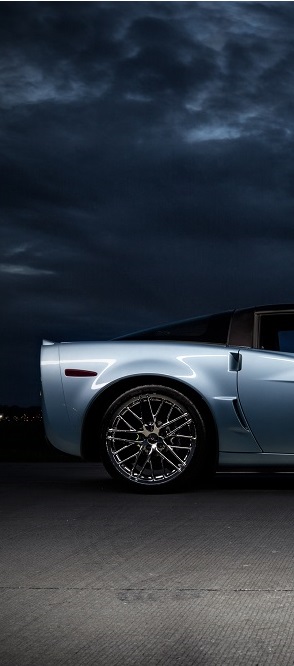

Lotus Elise Series Two 2001 to 2010
The Series 2 Elise began production for 2001 with a new partner – the U.S. based General Motors Corporation. The 2001 Elise is on a modified Series 1 chassis and is the first Lotus to be designed by a computer. The Rover 1.8 liter engine is still available in some models but most of the engines are made by Toyota and are still a 1.8 liter although the Toyota brand introduces a 1.6 liter power plant that still produces the same horse power ratings as the 1.8 liter.
© Ddcoral | Dreamstime.com – Yellow Lotus Elise Photo
The Series 2 still has the 111S model with the VVC engine technology which produces 160 hp (119 k) until 2005 when this engine is discontinued with the introduction of a new Toyota engine which helps the company comply with U.S. emission control regulations. The Sport 111 is the model taking its place but now is powered by a new VVC power plant producing 156 bhp (116 k; 158 PS). Track focused 135R putting out 135 bhp (101 kW; 137 PS) and the Sport 190 with 192 bhp (143 kW; 195 PS). These two models come with a handling package complemented with the Lotus sport suspension riding on wider rims and Yokohama Advan A048 tires.
Federal Elise is the first Lotus commercially sold in U.S. starting in 2005 with its European counterpart called the 111R. The car failed headlight regulations and the 5 mph impact test but is given a three year exemption. All the Federal Elise manufactured after January 1, 2007 have conforming headlights and a hidden 2.5 mph (4.0 km/h) impact bumper. The power for this model is an all aluminum DOHC Toyota ZZ engine with a twin camshaft head with variable valve timing on both the intake and exhaust valvetrains which is designed by Yamaha coupled to a six speed Lotus manual transmission. This version produces great performance and will do 0-60 (97 km/h) in 4.9 seconds with the Sport package shaving that by point two seconds. This is reputed to be the top Lotus ever produced.
© Themaxx23 | Dreamstime.com – Lotus Elise And Alps View Photo
Lotus released a limited edition – the Sport Elise in 2006 with 50 units sent to the U.S. as well as an updated Elise 111R and a new offering; the Sport Elise. The changes for ’06 include better fuel economy, LED tail lights, a “drive by wire” feature (a updated ECU), and form fitting ProBax seats.
In 2007 several minor changes happened; Lotus decals with raised lettering are added to the back, the headlamp units are sealed and, to conform to mandated U.S. crash regulations, the front bumper is altered with the rear bumperettes a new addition – although 100 units were landed without the bumper alterations. The Elise S is added to the lineup of models and the 111R renamed Elise R. The Elise S is now the base model and sports a new Toyota 1.8 liter 2ZZ-GE engine producing 189 bhp (141 k; 192 PS) at 6,200 rpm but the engine is heavier than the old base Rover design. ABS brakes, power windows, and carpet added to the new engines weight – the base car has gotten heavier by 85 kg (187 lbs).
© Themaxx23 | Dreamstime.com – Lotus Elise Meeting Photo
Several additions are added to the lineup for 2008; the base produces 189 hp (141 kW), the second model puts out 218 hp (163 kW) with the supercharged Sport Elise having 218 hp (163 kW) and will do 0-60 (97 km/h) in 4.3 seconds. A limited edition of 50 units of the California Edition Elise and have a few body changes such as shutter gills on the side inlets and a large spoiler on the rear deck with distinctive Saffron yellow and Ardent red paint.
Third Generation Elise is displayed at the 2010 Paris Motor Show and called the “Lotus Elise Concept”; the car has put on weight but will sport a much more powerful 2.0 liter engine.
Republished by Blog Post Promoter









